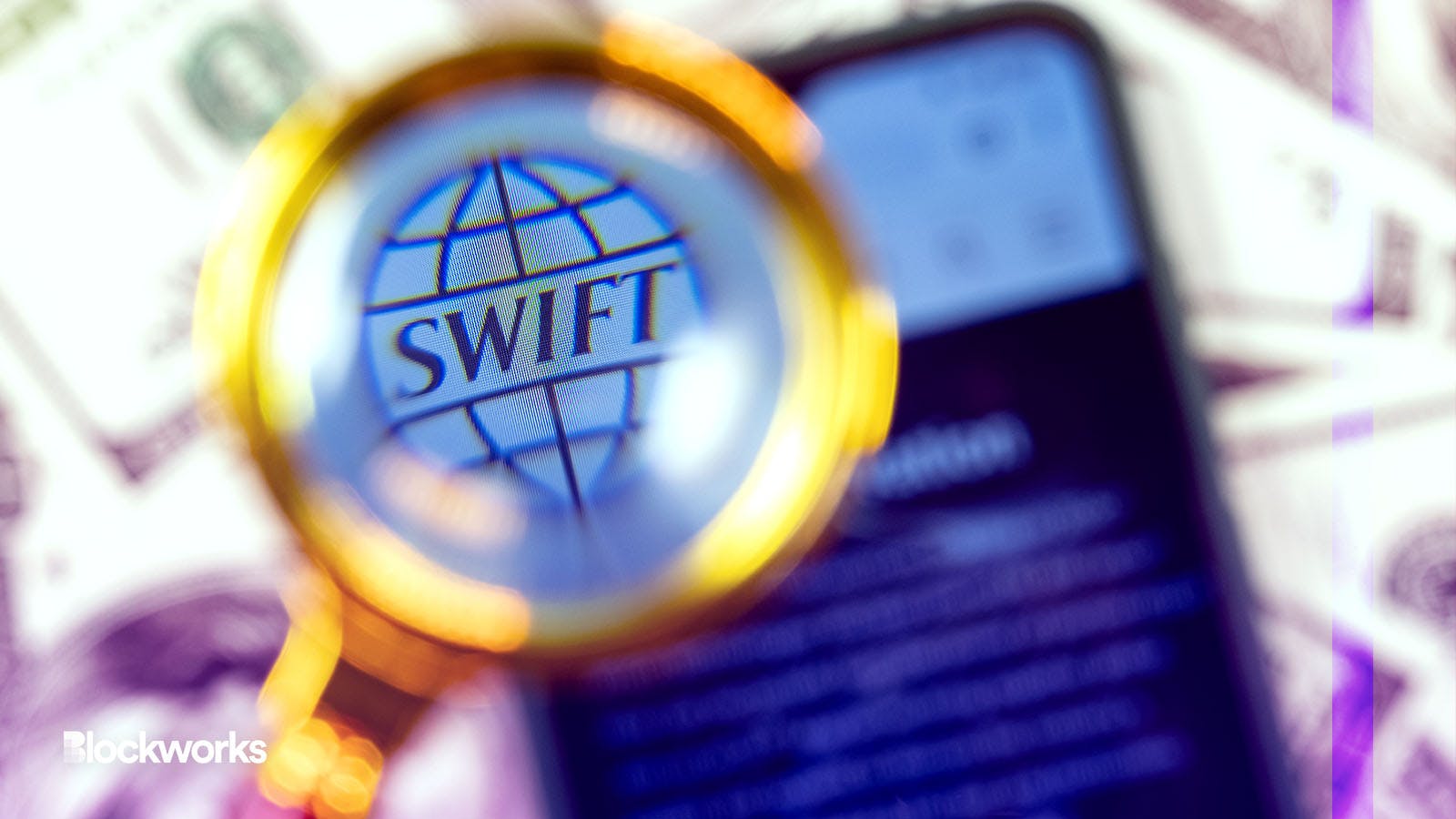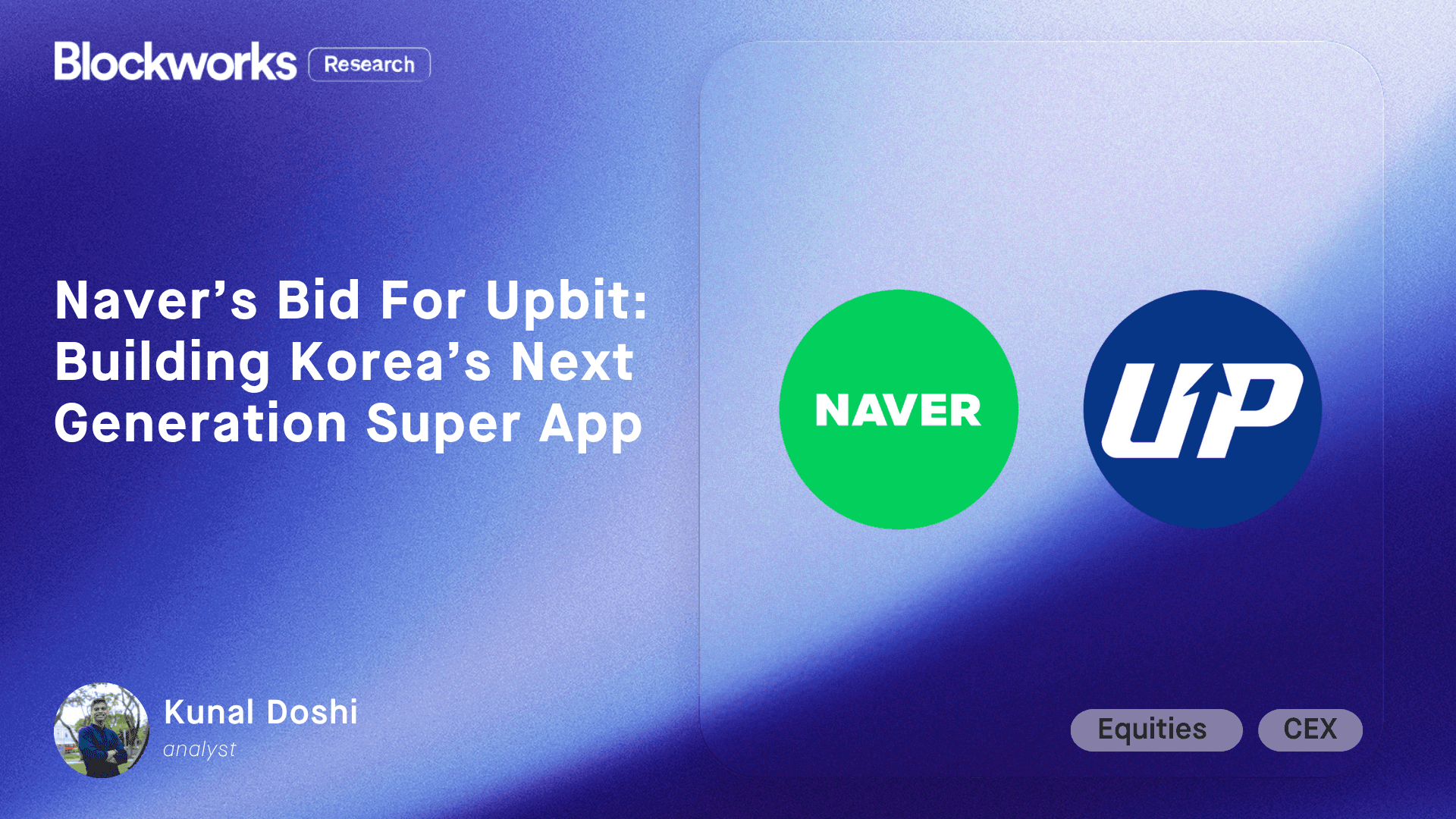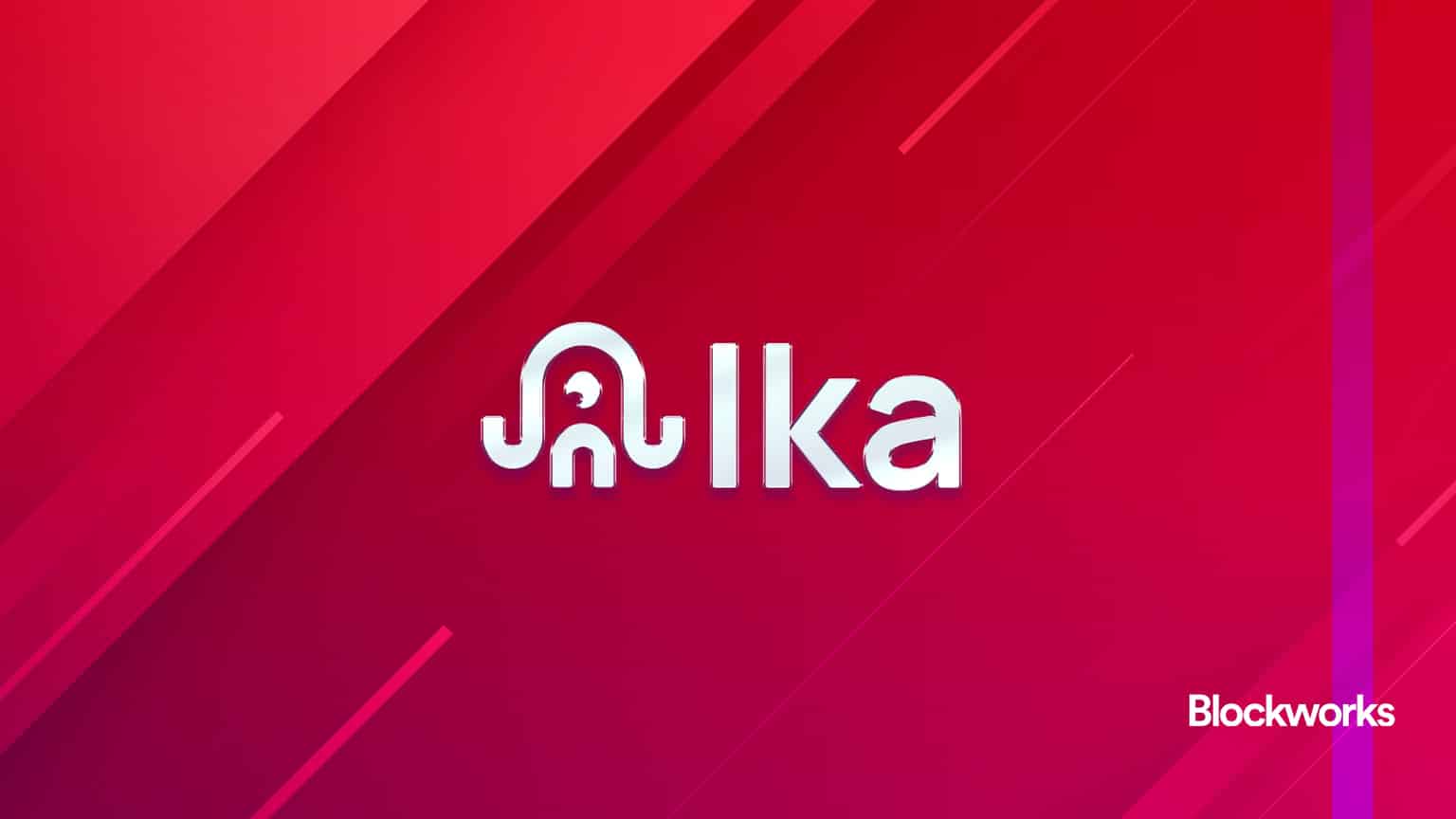Swift details findings in tests of Chainlink’s cross-chain interoperability
Banking system messaging giant Swift to provide a single entry point to streamline tokenized asset transfers for financial institutions

Sergei Elagin/Shutterstock, modified by Blockworks
The Society for Worldwide Interbank Financial Telecommunication (Swift) on Thursday announced successful experiments of tokenized asset transfers across multiple blockchains.
A new series of experiments revealed that Swift’s infrastructure could potentially eliminate “significant friction” hindering the growth of tokenized asset markets.
As a global interbank messaging system connecting over 11,000 banking and securities institutions across more than 200 countries, Swift plays a pivotal role in financial communications.
The organization identifies one of the key challenges facing investors and institutions is the fragmentation of tokenized assets across multiple blockchains.
Among its findings, a lack of regulatory clarity remains a primary obstacle, along with the need for data privacy, which Swift characterized as “fundamental to any commercial solution.”
Swift emphasizes that cross-platform compatibility is essential among these blockchains. Otherwise, financial institutions would be burdened with the complex and costly task of establishing individual connections to each.
In light of these complexities, investment bank Citi projects a booming future for the tokenization market, estimating its potential value to escalate to between $4 trillion and $5 trillion by the end of the decade.
Read more: We’re thinking about tokenization all wrong
In June, Swift announced its aim to link private and public blockchains in a trial collaboration with Web3 provider Chainlink and major financial institutions like BNP Paribas and BNY Mellon.
Now, it says the collaboration has effectively shown its capability to serve as a unified access point for multiple networks, using secure existing infrastructure.
The experiments were conducted on public testnets Ethereum Sepolia, Avalanche Fuji and a private Quorum blockchain.
“It’s now clear that both top global banks and leading market infrastructures believe there will be greater adoption of digital assets across the entire banking industry, and that this adoption will happen using multiple different blockchain technologies at the same time,” Chainlink co-founder Sergey Nazarov said in a statement.
“The collaboration between Swift, over ten of the largest financial institutions, and Chainlink also proved that interoperability across chains is critical to enabling the next stage of digital asset adoption across the global financial system,” he added.
After examining design and technical components with an emphasis on data privacy, governance, and risks, the latest experiments involved simulated transfers of tokens. These transfers took place within a single public blockchain, between different public blockchains, and also between public and private networks.
Swift’s infrastructure shows potential for facilitating the integration of Central Bank Digital Currencies and other digital assets with both new and existing payment systems.
The organization said it intends to continue exploring various blockchain technologies, concentrating particularly on public permissioned ledgers.
Get the news in your inbox. Explore Blockworks newsletters:
- The Breakdown: Decoding crypto and the markets. Daily.
- 0xResearch: Alpha in your inbox. Think like an analyst.
- Empire: Crypto news and analysis to start your day.
- Forward Guidance: The intersection of crypto, macro and policy.
- The Drop: Apps, games, memes and more.
- Lightspeed: All things Solana.
- Supply Shock: Bitcoin, bitcoin, bitcoin.






